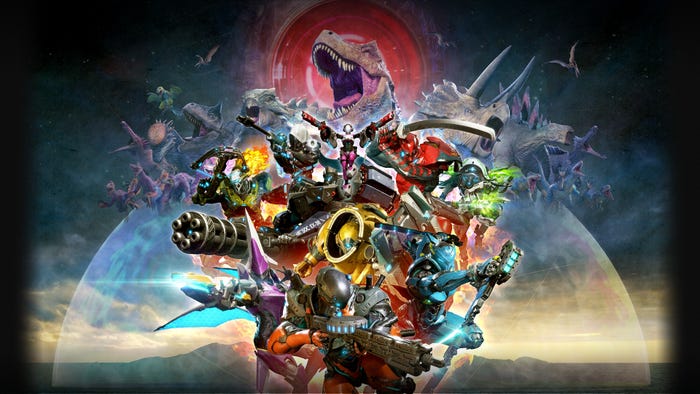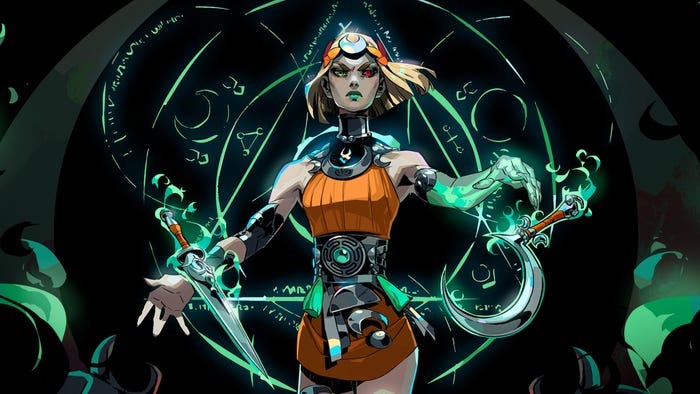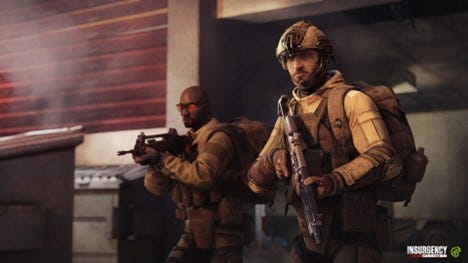
Featured Blog | This community-written post highlights the best of what the game industry has to offer. Read more like it on the Game Developer Blogs.
Trauma and Catharsis in Videogames — Part II of III: The Digital Stage
An epic three part reflection on how violent game mechanics can not only enhance but become game narrative. This is PART II in which I talk about the mercurial experience of playing a game and find an unexpected analogue in film.

Trauma and Catharsis in Videogames
Part II of III
The Digital Stage
Where The Last of Us and Bioshock Infinite differ from most other action games is that their violence leads the player somewhere. Where Uncharted’s combat sequences feel like almost masturbatory exercises in shallow self-satisfaction, isolated from the story, these two games direct their violence toward strange moments of catharsis that spring directly from interactivity and could not be replicated in a different medium.
To understand the transformative and positive effects of the violence in these games, we have to first investigate the rather mercurial experience of playing a videogame.
The experience of gaming is located somewhere between the painful intimacy of reality and the detached grace of cinema. That’s why the analogy of the stage comes to mind. Bear in mind, it is only an analogy, and as such only goes so far. However, I’ve found it particularly helpful in understanding videogames. Where playing a videogame might evoke an enactment and complicity, what is really happening is a reenactment that may lead to catharsis. The agency a videogame gives its players creates the strange paradox where actions have no effect — but do. Videogames subvert causality. They eliminate cause and effect without erasing their meaning. It’s more akin to a translation. Look at it like this: When an actor on a stage thrusts a prop knife into another actor’s back it’s an action comparable to firing your assault rifle in Call of Duty: outwardly, there has been no change to the world. Nobody has been stabbed, and no gun has been fired. That can only mean that change has been turned inward. So, the question as to how “real” the act of thrusting that prop knife was is rendered irrelevant. Relevant is the effect on the audience. The relationship between art and audience has always been a mystical one. It’s nearly impossible to define that exchange. Some would argue that art only exists in front of the audience, others that it prevails in spite of the audience. With regards to videogames, this relationship has become even more complicated because audience and actor are the same person. The player is the sole actor on a stage where his actions are only acts. No matter how wounding their brutality, or how intimate their emotion. That agency without impact puts the player into a unique headspace where he is both actor and audience, where he can both enact and observe. In terms of digital acts of killing, this complicates everything. The mechanics of games like The Last of Us or Bioshock Infinite replicate physical trauma and stress. Unlike real-life trauma, however, ludic trauma doesn’t suspend comprehension and self-reflexivity. Instead, it establishes a constant negotiation between both, due to the incessant push and pull between complicity and detachedness. What helped me understand this completely novel phenomenon somewhat better, and gave me the idea for these thoughts on digital violence, is the 2013 documentary The Act of Killing by Joshua Oppenheimer.
Toward the end of the sixties, an anticommunist purge ravaged Indonesia and claimed at least half a million lives. The Act of Killing follows Anwar Congo who led one of the death squads in North Sumatra and has himself killed a thousand people. Today, Anwar lives among the people, a grandfather, beloved, even celebrated and never judged. He has never been forced to truly confront his sins, even though the things he’s done are being mentioned all the time. He never properly addresses his guilt, even though nightmares haunt his sleep.
The documentary proceeds in three stages: trauma, reflection, catharsis. Early on, it is established that trauma doesn’t only affect the victim, it goes both ways. Oppenheimer directs our attention to the fact that Anwar has pushed the violence and the murder to the back of his mind. The old man doesn’t reflect on the meaning of what he has done. It’s almost like someone else’s history. Comprehension and self-reflexivity have been suspended by trauma. The horror of having killed hundreds of people has more or less insulated his brain from his soul. To dismantle this mental armor, Oppenheimer introduces a smart twist into The Act of Killing: He asks Anwar (and other death squad leaders) to reenact the purges and their killings, using any genre or stylistic device they may choose, and offers to film them doing it. That’s where the documentary truly gets fascinating. Now, for the first time, Anwar is forced to take an arguably objective stance toward his past: Actors have to be able to step outside the story, as part of the process, to discuss plot, performance techniques, how the character feels, etc. These quite conventional aspects of filmmaking have a different effect on Anwar: His past has temporarily been transported to a fictional domain where it can be deconstructed and analyzed. Like the player of a videogame, Anwar is suddenly confronted with actions that are simultaneously his own and not his own, both act and remembrance. This sudden self-reflexivity and detachedness force Anwar to be face to face with the evil of his past and with who he’s been. The final moments of The Act of Killing are cathartic in a strange way. Anwar revisits a site of past atrocities, the roof of a house where he used to strangle dissenters to death with a wire. Whereas in an earlier scene, Anwar had presented this haunted place to the camera with a perverted air of pride, suddenly he realizes what he has done. He gags, he has to sit down, he does not know what to say, because now there is nothing left to say. The documentary ends shortly after. It’s a cold, hard ending to an astonishing, horrifying film about real monsters, but most importantly, it’s cathartic. Catharsis describes the act of having been purged, and that he has. There’s nothing left within him. Anwar realizes that the murders of his past had been sanctioned by a falsified history and his own self-deception. With that deception having been cleansed from his mind, he now has to contend with the stark evil of what he has done.
The experience of playing a violent videogame inhabits a similar space as Anwar Congo playing himself and enacting his past crimes. Take for example the much discussed torture scene from Grand Theft Auto V. In a mission called "By the Book", a fictionalized government agency forces Trevor, one of the playable characters in the game, to torture a man for information.
The player (controlling Trevor from the third person, i.e., looking over his shoulder) stands over a stranger who’s tied to a chair. The only gameplay options available to you are the ways in which to torture the man. Choices include waterboarding, beating him with a wrench, pulling out one of his teeth, or giving him electro shocks. The order in which to apply these ‘enhanced interrogation methods’ is up to the player. The victim will wail and beg throughout the ordeal. It’s a very upsetting scene, and one that has caused much controversy and conversation. I have played it. It creates an experience that’s only possible in a videogame: it made me feel terrible throughout and it made me feel guilty about my actions. Briefly, I considered stopping the scene, and quitting the game. But I didn’t. I did not quit GTA V at that point because on some cerebral level I was aware of the bromide that this was ‘just a game’. But more importantly: I knew I would never get closer to the actual men and women on some CIA black site somewhere who were torturing their prisoners for information in reality. It became clear to me that whilst my actions in the game were non-actions, their effect on me was real, and it was profound. Unlike Anwar, the enactment couldn’t break me because it wasn’t actually about me, but about the experience as such. Like the enactments in The Act of Killing, however, it led to something more. “By the Book” allowed me to feel something I simply couldn’t if I was watching a film.
That’s the potential endemic in the medium of videogames: It allows the player to enter into for experiences so traumatic and harrowing and wounding, that in real life no degrees of therapy would be able to break through the mental and physical scar tissue. On the digital stage however, these fringe experiences — if they are done well — can lead to catharsis. “By the Book” taught me more about torture than Zero Dark Thirty. The simultaneous detachedness and complicity of the digital stage furnishes understanding that neither the bludgeoning intimacy of real life nor the indomitable detachedness of cinema could provide.
to be continued ...
Read more about:
Featured BlogsAbout the Author(s)
You May Also Like













